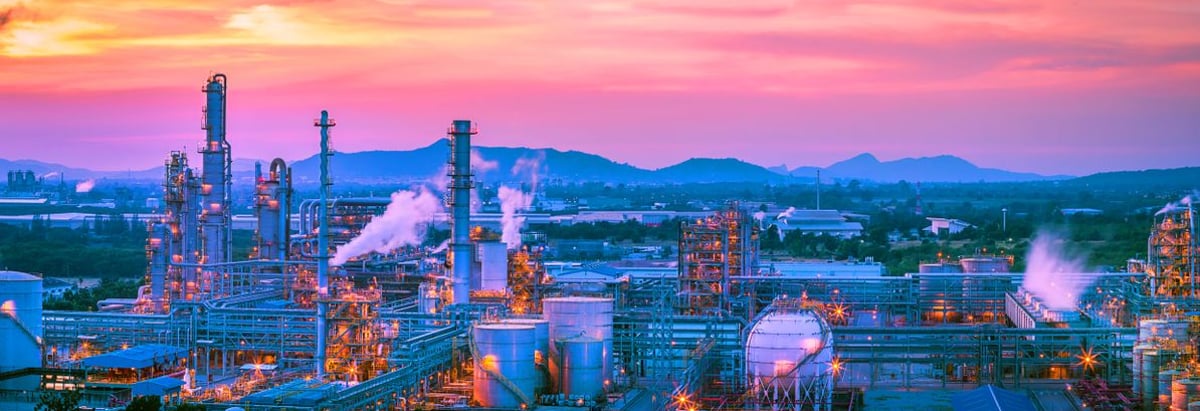- Canada
- /
- Oil and Gas
- /
- TSX:IMO
These 4 Measures Indicate That Imperial Oil (TSE:IMO) Is Using Debt Extensively

Howard Marks put it nicely when he said that, rather than worrying about share price volatility, 'The possibility of permanent loss is the risk I worry about... and every practical investor I know worries about. So it seems the smart money knows that debt - which is usually involved in bankruptcies - is a very important factor, when you assess how risky a company is. We can see that Imperial Oil Limited (TSE:IMO) does use debt in its business. But should shareholders be worried about its use of debt?
What Risk Does Debt Bring?
Debt is a tool to help businesses grow, but if a business is incapable of paying off its lenders, then it exists at their mercy. In the worst case scenario, a company can go bankrupt if it cannot pay its creditors. However, a more common (but still painful) scenario is that it has to raise new equity capital at a low price, thus permanently diluting shareholders. Of course, plenty of companies use debt to fund growth, without any negative consequences. The first thing to do when considering how much debt a business uses is to look at its cash and debt together.
View our latest analysis for Imperial Oil
What Is Imperial Oil's Net Debt?
As you can see below, Imperial Oil had CA$4.68b of debt, at March 2020, which is about the same as the year before. You can click the chart for greater detail. However, it does have CA$1.39b in cash offsetting this, leading to net debt of about CA$3.29b.

How Healthy Is Imperial Oil's Balance Sheet?
The latest balance sheet data shows that Imperial Oil had liabilities of CA$3.47b due within a year, and liabilities of CA$13.4b falling due after that. Offsetting these obligations, it had cash of CA$1.39b as well as receivables valued at CA$1.56b due within 12 months. So it has liabilities totalling CA$13.9b more than its cash and near-term receivables, combined.
This is a mountain of leverage even relative to its gargantuan market capitalization of CA$14.5b. This suggests shareholders would be heavily diluted if the company needed to shore up its balance sheet in a hurry.
In order to size up a company's debt relative to its earnings, we calculate its net debt divided by its earnings before interest, tax, depreciation, and amortization (EBITDA) and its earnings before interest and tax (EBIT) divided by its interest expense (its interest cover). The advantage of this approach is that we take into account both the absolute quantum of debt (with net debt to EBITDA) and the actual interest expenses associated with that debt (with its interest cover ratio).
Imperial Oil's net debt is only 0.99 times its EBITDA. And its EBIT easily covers its interest expense, being 49.1 times the size. So we're pretty relaxed about its super-conservative use of debt. In fact Imperial Oil's saving grace is its low debt levels, because its EBIT has tanked 41% in the last twelve months. Falling earnings (if the trend continues) could eventually make even modest debt quite risky. When analysing debt levels, the balance sheet is the obvious place to start. But it is future earnings, more than anything, that will determine Imperial Oil's ability to maintain a healthy balance sheet going forward. So if you're focused on the future you can check out this free report showing analyst profit forecasts.
But our final consideration is also important, because a company cannot pay debt with paper profits; it needs cold hard cash. So we always check how much of that EBIT is translated into free cash flow. Over the last three years, Imperial Oil actually produced more free cash flow than EBIT. That sort of strong cash generation warms our hearts like a puppy in a bumblebee suit.
Our View
While Imperial Oil's EBIT growth rate has us nervous. For example, its interest cover and conversion of EBIT to free cash flow give us some confidence in its ability to manage its debt. Looking at all the angles mentioned above, it does seem to us that Imperial Oil is a somewhat risky investment as a result of its debt. Not all risk is bad, as it can boost share price returns if it pays off, but this debt risk is worth keeping in mind. There's no doubt that we learn most about debt from the balance sheet. But ultimately, every company can contain risks that exist outside of the balance sheet. Be aware that Imperial Oil is showing 1 warning sign in our investment analysis , you should know about...
When all is said and done, sometimes its easier to focus on companies that don't even need debt. Readers can access a list of growth stocks with zero net debt 100% free, right now.
If you spot an error that warrants correction, please contact the editor at editorial-team@simplywallst.com. This article by Simply Wall St is general in nature. It does not constitute a recommendation to buy or sell any stock, and does not take account of your objectives, or your financial situation. Simply Wall St has no position in the stocks mentioned.
We aim to bring you long-term focused research analysis driven by fundamental data. Note that our analysis may not factor in the latest price-sensitive company announcements or qualitative material. Thank you for reading.
About TSX:IMO
Imperial Oil
Engages in exploration, production, and sale of crude oil and natural gas in Canada.
Undervalued with excellent balance sheet and pays a dividend.
Similar Companies
Market Insights
Community Narratives



